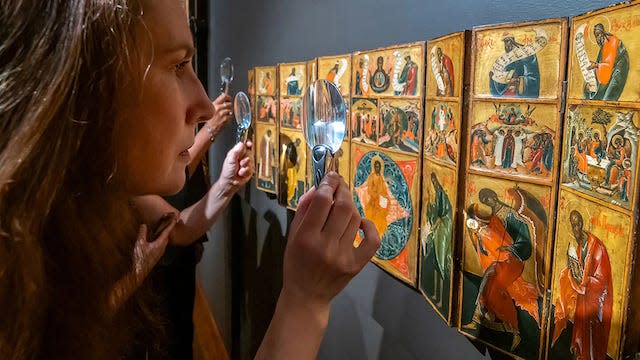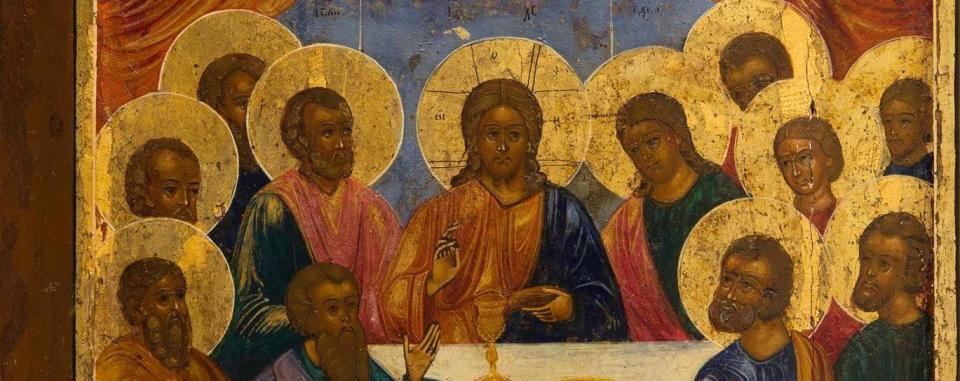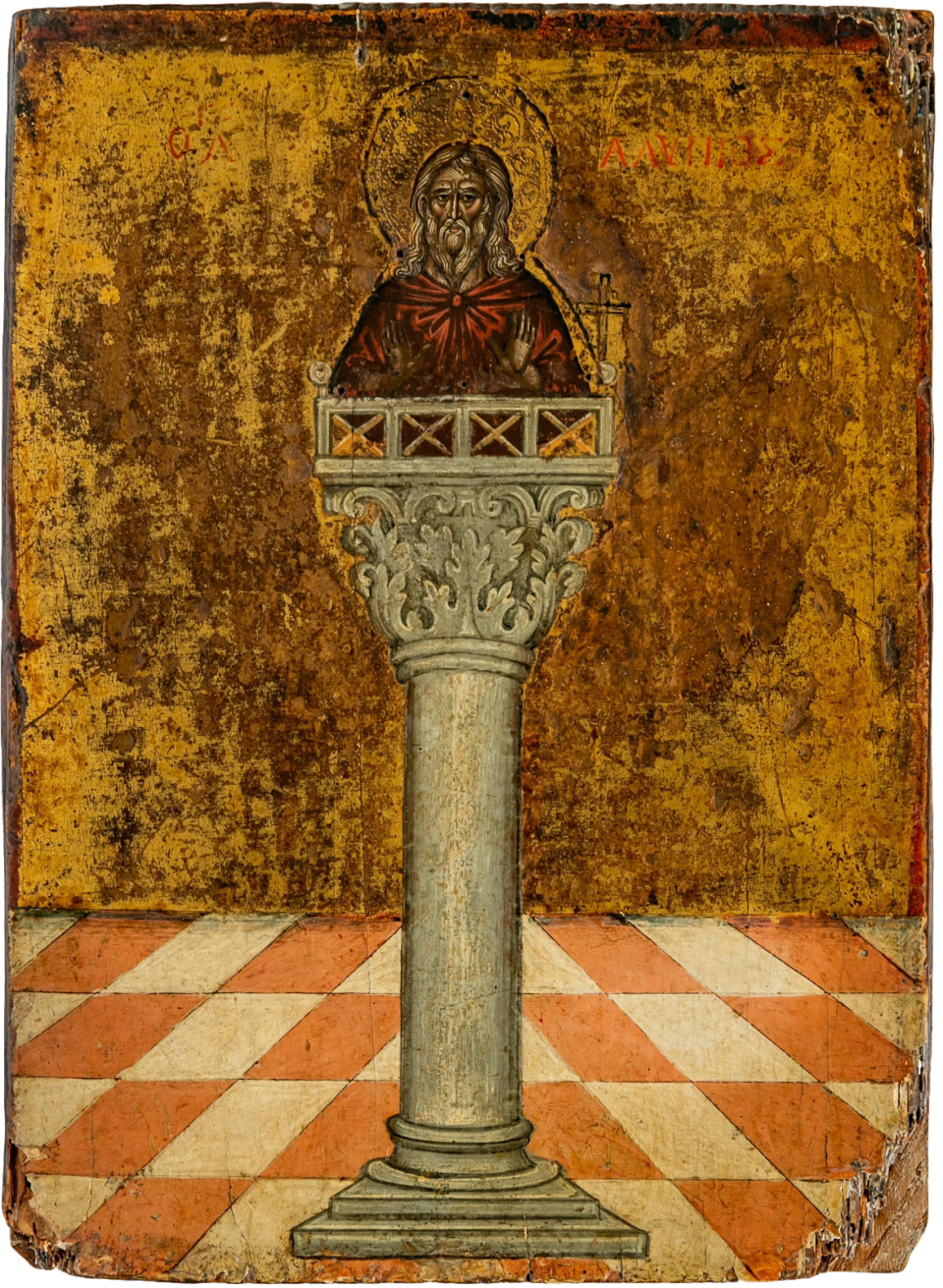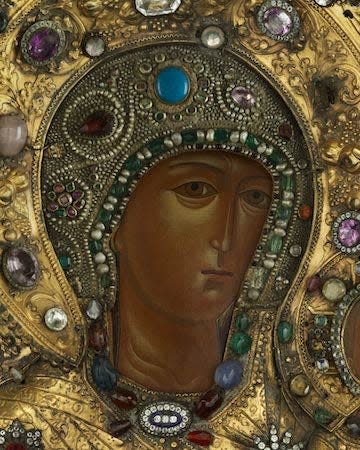The Museum of Russian Icons changes name to The Icon Museum and Study Center

CLINTON — The Museum of Russian Icons has announced a new name, The Icon Museum and Study Center, that emphasizes "a revitalized mission to balance the organization’s focus on exhibition and scholarship, while expanding the collection to include sacred icons from a broader diversity of Eastern Christian cultures."
The name change for the nonprofit museum at 203 Union St., which became official on Oct. 14, is part of a new five-year strategic plan. But it also comes in the aftermath of Russia's invasion of Ukraine in 2022 and the ongoing conflict.
"The answer is — yes, of course it has," Simon Morsink, the museum's executive director, said Wednesday, when asked if the war has played a part in the name change. "The thing is, we do break with Russia and its politics because war destroys everything. But we do not break with Russian culture. We want to show this magnificent culture as world culture."
A unique museum
The Museum of Russian Icons had been the only museum in the country dedicated to Russian icons, holding the largest collection of icons outside of Russia. It was founded in 2006 by industrialist and art collector Gordon B. Lankton, a plastics engineer and former chairman and CEO of Nypro Inc., a precision injection molding company. The museum was led for more than 16 years by founding director Kent dur Russell. Lankton died in 2021, and Russell retired in May last year.
Morsink, a Dutch art historian and icon expert in Russian icons, Greek icons and Ethiopian and Byzantine art, came on board as the museum's new executive director last year.
The Icon Museum and Study Center will continue to showcase its Russian icon collection while also seeking to acquire icons from other countries and cultures, Morsink said. "Russian icons are still very important to us. They are the core of our collection, but we are expanding to other corners of Christianity."

Showing support for Ukraine
The Museum of Russian Icons was forthright in condemning Russia's invasion from the beginning.
In an interview earlier this year, Morsink noted that a big Ukrainian flag hangs outside the museum's building in Clinton.
"I feel it is very important that we keep showing our support to Ukraine," he said Wednesday.
However, the name change would probably have come about eventually, given the museum's expanded focus, he said. "I think the events in Ukraine have accelerated the process."
“By weaving both the Icon Museum and the Study Center into the new name, I believe that we are a truly unique and welcoming resource in the world of icons and Eastern Christian art,” Morsink said in the announcement of the new name. “Icons are intriguing and very beautiful. They have their roots in early Christianity and they are an art form that has ties with many areas of Western culture from antiquity through the Renaissance to the present day. Russian icons are part of a fascinating world of Eastern Christian art. This sphere includes Bulgaria, Ethiopia, Georgia, Greece, Crete, Ukraine, Venice, and other places — there's so much to explore and to show our public.”
The museum had been giving thought to expanding its artistic reach and establishing a new brand. "We've been working on our future. There have been many discussions of what our future should look like. There's a real opportunity to see us as a center for Christian icons," Morsink said.

A 'revitalized and expanded mission'
Created by Wilcox Design located in Cambridge, the new brand identity, which includes a new logo, "visually embodies the newly revitalized and expanded mission," the museum said in the announcement. The Wilcox Design team conducted extensive interviews with the organization’s staff and volunteers, leadership, and community members and led a core committee of museum board members through an exploration of options for the name.
“The new name emerged from that process,” said principal Jean Wilcox. “The new name is a bold statement of the leadership role they are claiming as the only organization entirely devoted to the collection, exhibition, and study of Eastern Christian art in the U.S.”
In 1989, Lankton first traveled to Russia to open a Nypro factory there. On that visit, after learning more about icons, Lankton began his collection, starting with an icon he found at a flea market. Over the years, Lankton amassed several hundred icons and the idea grew to start a museum. The museum includes three floors of galleries, a tea room and an auditorium.

Preserving art history and icons
The museum has more than 1,000 icons and related artifacts spanning six centuries and including art being created in the present day. The museum regularly puts on new exhibitions as well as programs, events, films and talks, and hosts scholarly research.
Museum Board President Jack McCabe said, “Our new name reaffirms our founder Gordon Lankton’s commitment to preserve and promote the art and history of icons, and to educate and inform our visitors as a means of understanding and celebrating cultures around the world. This is a tremendous moment for our museum.”
Simultaneous with the renaming, the museum said the Main Gallery will become the Gordon B. Lankton Gallery. The newly installed gallery will display a selection of the best icons from Lankton’s collection, alongside icons recently acquired through the Gordon B. Lankton Fund, offering a comprehensive overview of the history of Russian icon painting.
Meanwhile, another gallery has been named the Greek Gallery and will feature newly acquired icons from Greece and Crete, Morsink said. "It's part of our very active role we are playing in the icon world," he said.
"Building on museum founder Lankton's international worldview, the museum’s renewed mission is to illuminate the art of the sacred icon for a global audience," the museum said. "While exploring the eternal beauty, fascinating history and deep spirituality of icons, the museum will embrace the whole world of Eastern Christianity. Serving as a leading center for dialogue on icons as a diverse and living tradition, the organization will inspire learning and understanding through innovative exhibitions, programs and scholarship."
Morsink said, “We will seek partnerships with museums, academic institutions and private collectors worldwide. While pursuing these ambitious goals, we will also work to strengthen our ties with the local community, and to create a financially sustainable and respected institution."
With the name change announced there is still a lot to be done, Morsink said. "Signage has to be changed. Hundreds of little things have to be changed."
The Icon Museum and Study Center, 203 Union St., Clinton. Museum hours: Thursday, Friday, Saturday, and Sunday, 10 a.m. to 4 p.m. Closed Monday–Wednesday. Museum admission: Adults $15, Seniors (65+) $12, Students (with ID) Free, Children and youth (0-17) Free.
This article originally appeared on Telegram & Gazette: The Museum of Russian Icons is now The Icon Museum and Study Center

